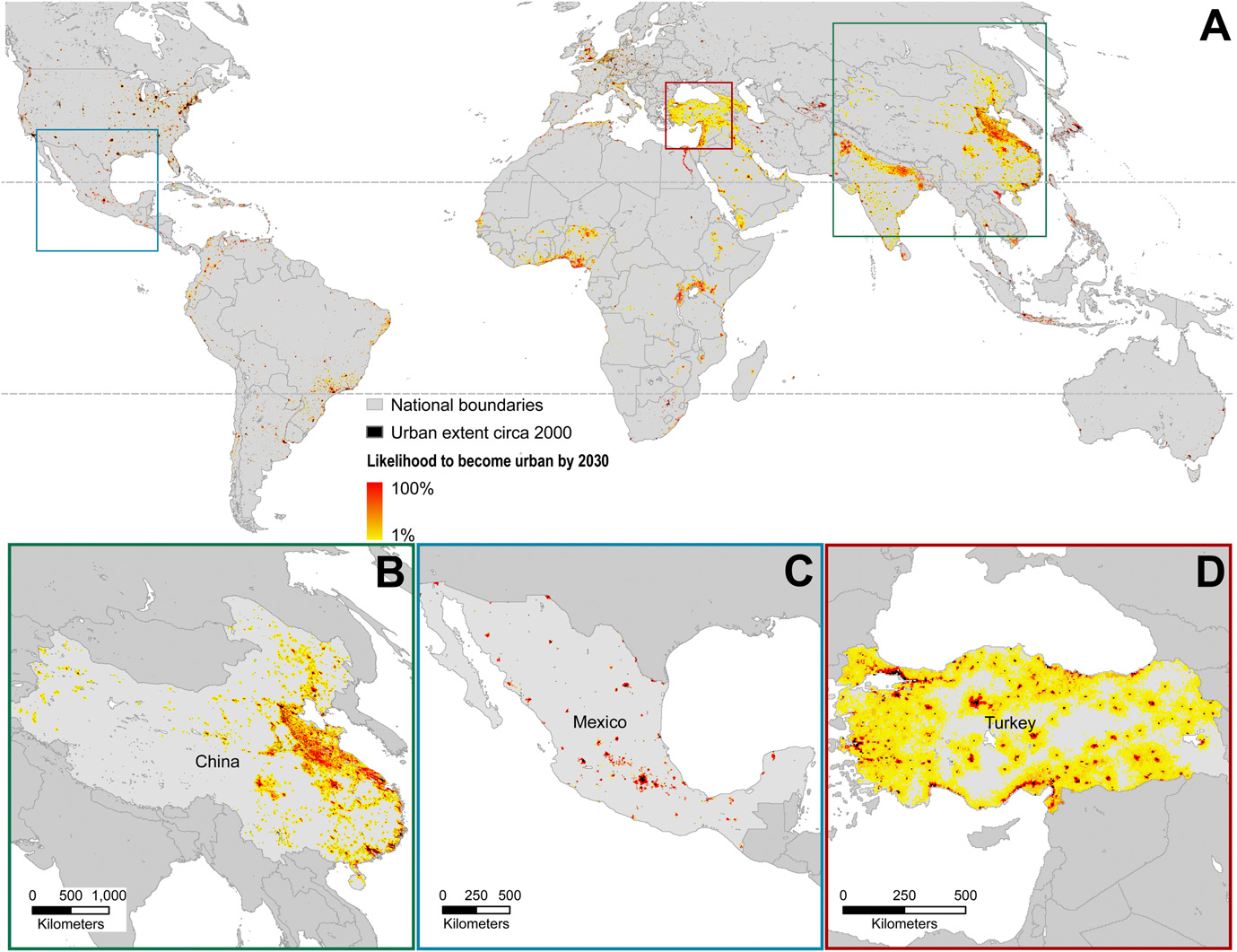Research Summary
We apply our models of urban change to different policy and socioeconomic scenarios to forecast future urban growth.
Some forecasts explore different future scenarios of GDP, rent, wages, demographics, policy, and investment. Other methods match probabilistic estimates of growth to spatially explicit grid-based models, which use features of topography, population density, and existing infrastructure as primary drivers of land change (Seto et al., 2012). All forecasts rely on consistent satellite measurements of current urban coverage, which facilitates aggregation of data across the universe of cities (Seto & Christensen, 2013).
Recent Findings
In 2008, the global urban population exceeded the rural population for the first time, and it is estimated that by 2050, 70% of the world population will live in urban areas (UN DESA, 2012). Furthermore, mid-range forecasts show an increase of around 1.5 million square kilometers of new urban land area by 2030, an area nearly equal to the land area of Mongolia, and nearly tripling the global urban land area in 2000 (Seto et al. 2011; Seto et al. 2012) These forecasts suggest an important—and limited—window of opportunity to shape future urbanization.
Global Forecast of Urban Expansion Probabilities
From Seto et al. 2012: Global forecasts of probabilities of urban expansion, 2030. There is significant variation in the amount and likelihood of urban expansion (A). Much of the forecasted urban expansion is likely to occur in eastern China (B). Some regions have high probability of urban expansion is specific locations (C) and others have large areas of low probability urban growth (D). Dashed lines denote northern and southern boundaries of the tropics.

